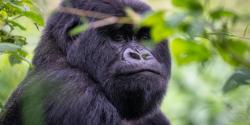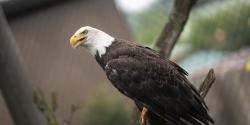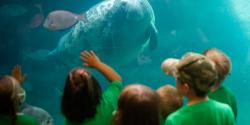The historic Reptile Building at the Columbus Zoo and Aquarium is the oldest building at the Zoo (built in 1967!) and houses a wide variety of protected species. In addition to its reptilian residents... turtles, tortoises, snakes, lizards, and more... several species of amphibians also call this building home.
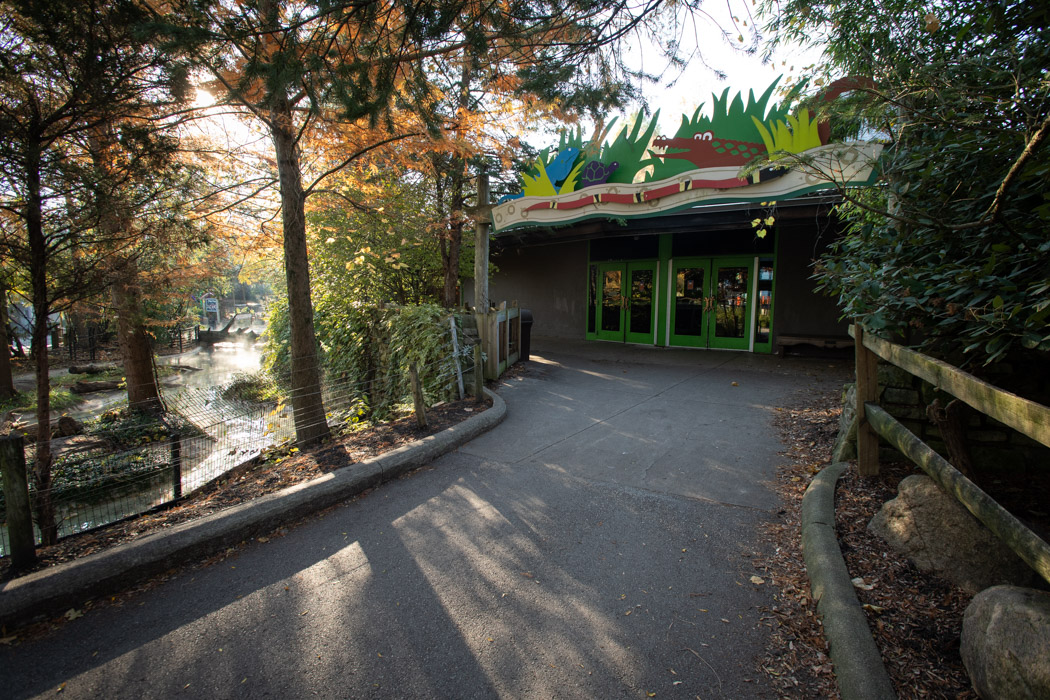
A small group of three juvenile axolotls (Ambystoma mexicanum) joined the Columbus Zoo's Reptile Building family in November 2021 and have been living together inside their freshwater habitat ever since. Their group consists of two males and one female, and they are all between 2 and 3 years old.
While the three in our care are all black, axolotls have roughly 20 different color variations with the most common being white, black, pink, and grey. Their coloration is determined purely by their genetics. Their coloring isn't the only reason why these animals are so interesting.
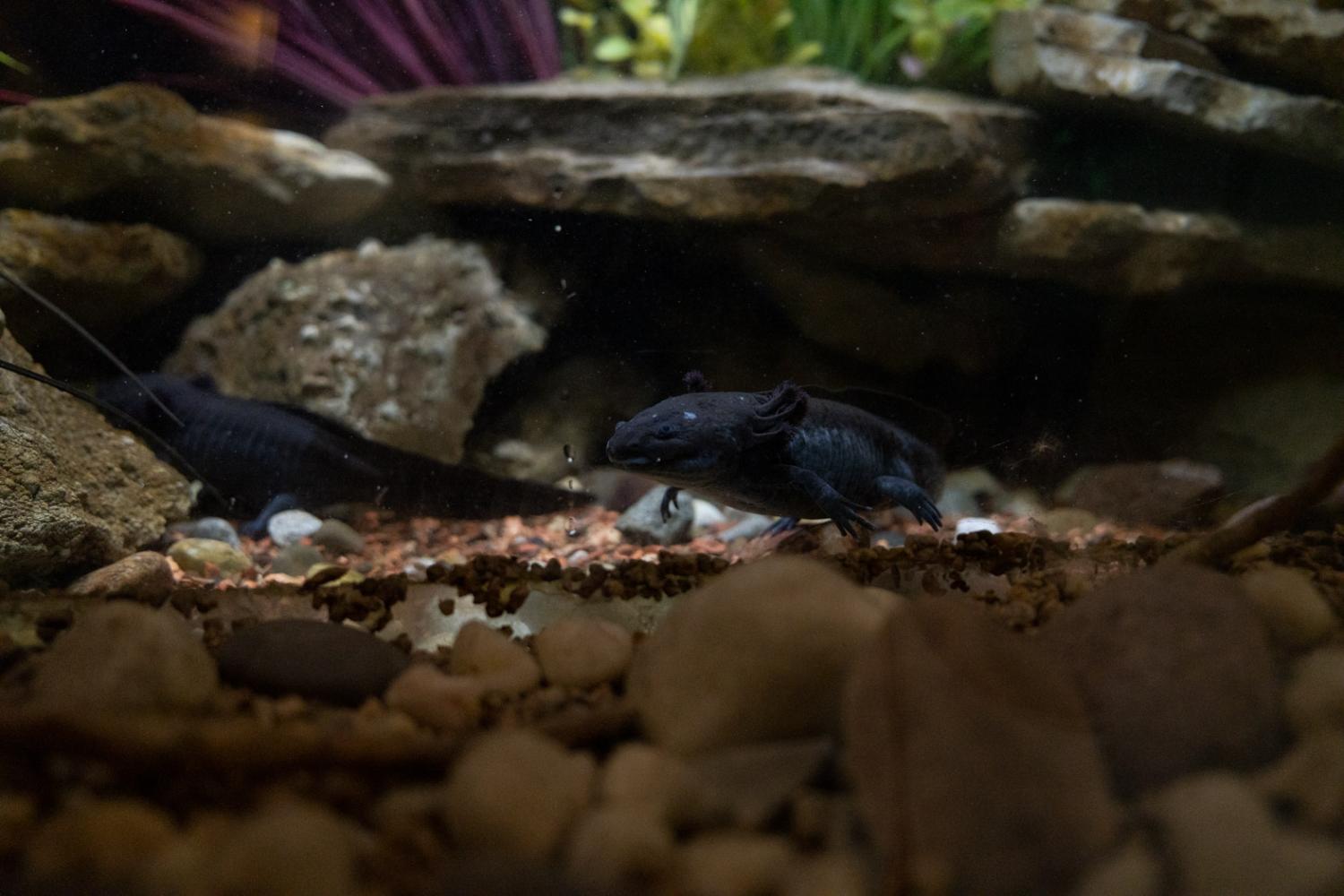
Axolotls are unique amphibians in several ways:
- Axolotls are one of just a few fully-aquatic species of salamander.
- They are carnivorous! The axolotls in our care regularly feast on smelt and earthworms.
- They are cold-water animals with their ideal water temperature being between 60 and 70 degrees Fahrenheit.
- Axolotls have the unique ability to regenerate virtually any body part. If they lose an arm, it will grow back. They are often even able to regenerate parts of their brain!
- They can live up to 10 years (sometimes longer!) and can grow to be between 9 and 12 inches long.
- These creatures are native to Mexico City, Mexico. That's the only place you will find them in the wild.
- They do not have eyelids. Axolotls prefer the dark to bright light, which can easily irritate their eyes if exposed to it for too long.
Because of their unique abilities, especially regarding regeneration, axolotls have become popular subjects to scientific research. Their species serves as an important model for studying both regeneration and tissue repair in vertebrates. In the scientific community, the axolotl is often considered the "master" of regeneration.
The next time you visit the Columbus Zoo's Reptile Building, you definitely don't want to miss your chance to see these amazing animals! You can find our axolotl trio on the first wall that you see after walking in the building. When you're there, don't be afraid to "axolotl" questions to our keeper staff-- they will be sure to point you in the right direction!
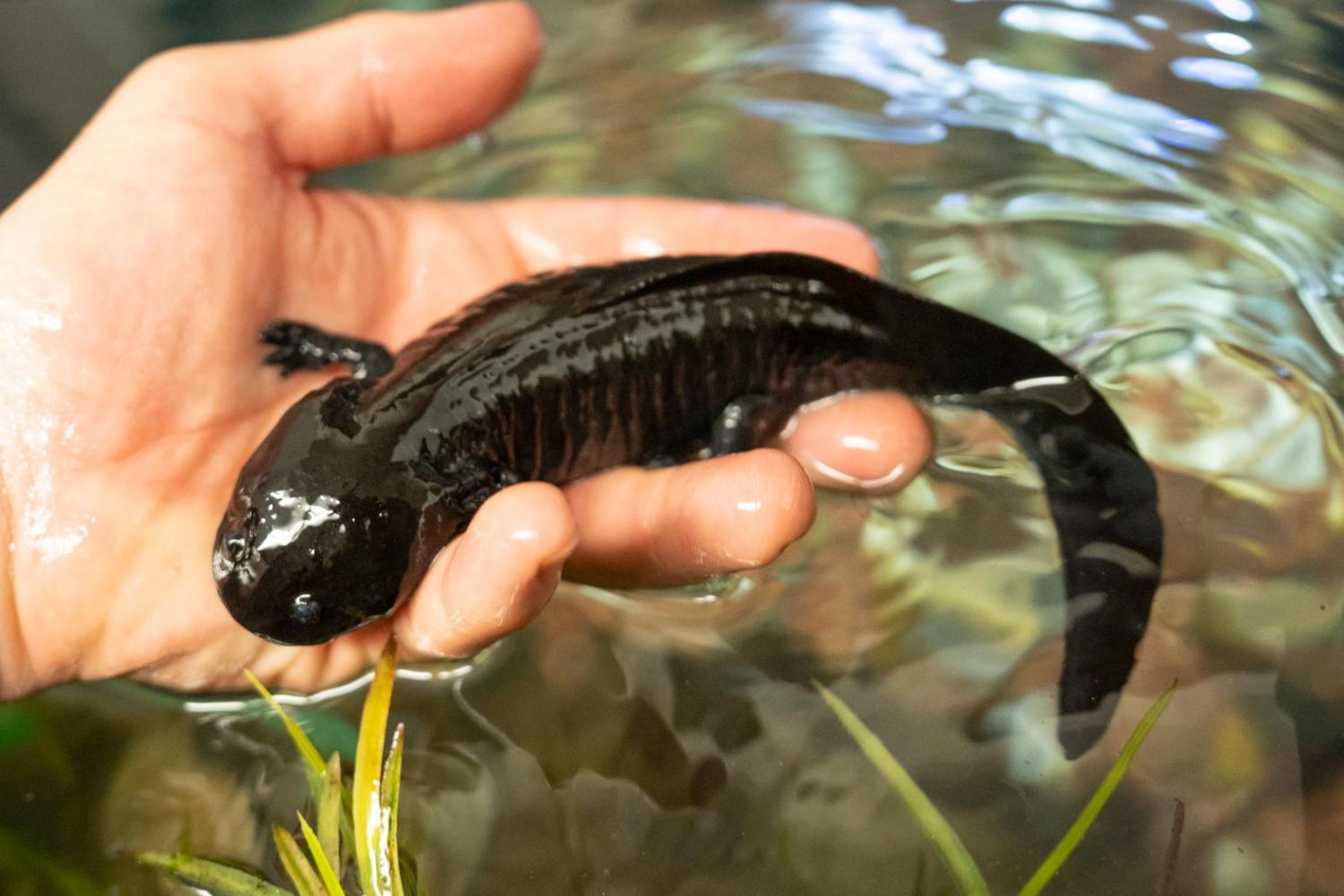
Axolotls, and many other fascinating amphibians and reptiles, can be found in the Zoo's Shores and Aquarium region.

